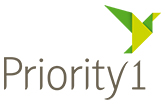
Australian Bureau of Statistics, (ABS) figures indicate that between 2017-2018 and 2019-2020 total average household debt rose from $190,000 to $204,000.
That’s an increase of over 7% in two years!
The reasons why would make for an interesting study, however a more pressing question might be what can we do about it?
Combine high levels of debt with rising interest rates and a cost-of-living crisis, and it’s no surprise that Australian households are reaching out to Debt Management (DM) companies to help regain control of their finances.
DM companies are private organisations that can assist by:
- consolidating and simplifying multiple debts,
- helping to develop a sensible repayment plan,
- negotiating with creditors to:
- alleviate pressure on householders, and
- satisfy creditors’ immediate payment concerns.
Sometimes, DM companies repay your debts – to a specified limit – and you repay them under a single loan arrangement. Terms and payment amounts can be negotiated, offering a beacon of hope and a sense that you’re taking back control.
If this sounds like the perfect solution, remember that for every pro, there’s usually a con. For example:
- Engaging a DM company may affect your credit score. Though you’re making regular repayments, closing or restructuring accounts may be recorded unfavourably on your overall credit history.
- Fees and charges apply. DM companies are not charities. Costs may include setup and monthly fees, usually calculated on the total debt being managed. Fees are added to the overall debt which magnifies the financial difficulty.
- Generally structured and inflexible, DM plans require adherence to a strict payment schedule. This can be stressful if income fluctuates or unexpected financial situations arise.
While weighing the pros and cons of a DM service, here are a few do-it-yourself strategies for consideration.
Budgeting
Creating a budget is a 3-step process.
- List your income and expenses, (debts, rent/mortgage, food, medical, utilities, entertainment, eating out, etc.). For debts, include:
i.amounts owed
ii.minimum monthly payments
iii. due dates - Categorise spending into a) Needs (can’t live without) and b) Wants (nice to haves).Now look for ways to reduce spending; be honest, do you really need two coffees each day?
The government’s Moneysmart website lists easy ways of cutting back everyday spending.
3. Allocate saved money to debts. Identify which one/s to pay first, e.g., prioritising those attracting higher interest, like credit cards.
Negotiating
Rather than customers defaulting, most banks and utilities companies prefer to negotiate repayment terms, sometimes even offering assistance programs.
The key is to reach out before it’s too late. Be upfront about your situation and willing to arrive at a mutually beneficial arrangement.
Remember, nobody wins when debts are not paid.
Government assistance
The Australian government provides a range of financial assistance packages and interest-free loans depending on circumstances. These include crisis payments for unexpected situations, and income support payments for cost of living expenses.
Of course there are conditions, but further information, including application criteria, is available from the MyGov website.
Financial counselling
Financial counsellors help you understand your financial position and assist you to navigate your way out of difficulty.
Some local communities offer free, or low-cost, financial literacy programs, aimed at providing education about money and debt reduction.
Everyone’s financial position is unique. There’s no one-size-fits-all, so it’s important that your action plan is specific to your needs and that you’re 100% comfortable with any decisions you make.
If you’re uncertain, seek the assistance of a qualified financial planner.
What’s crucial is that you do something; being proactive is empowering and sets you on the path to financial recovery.
